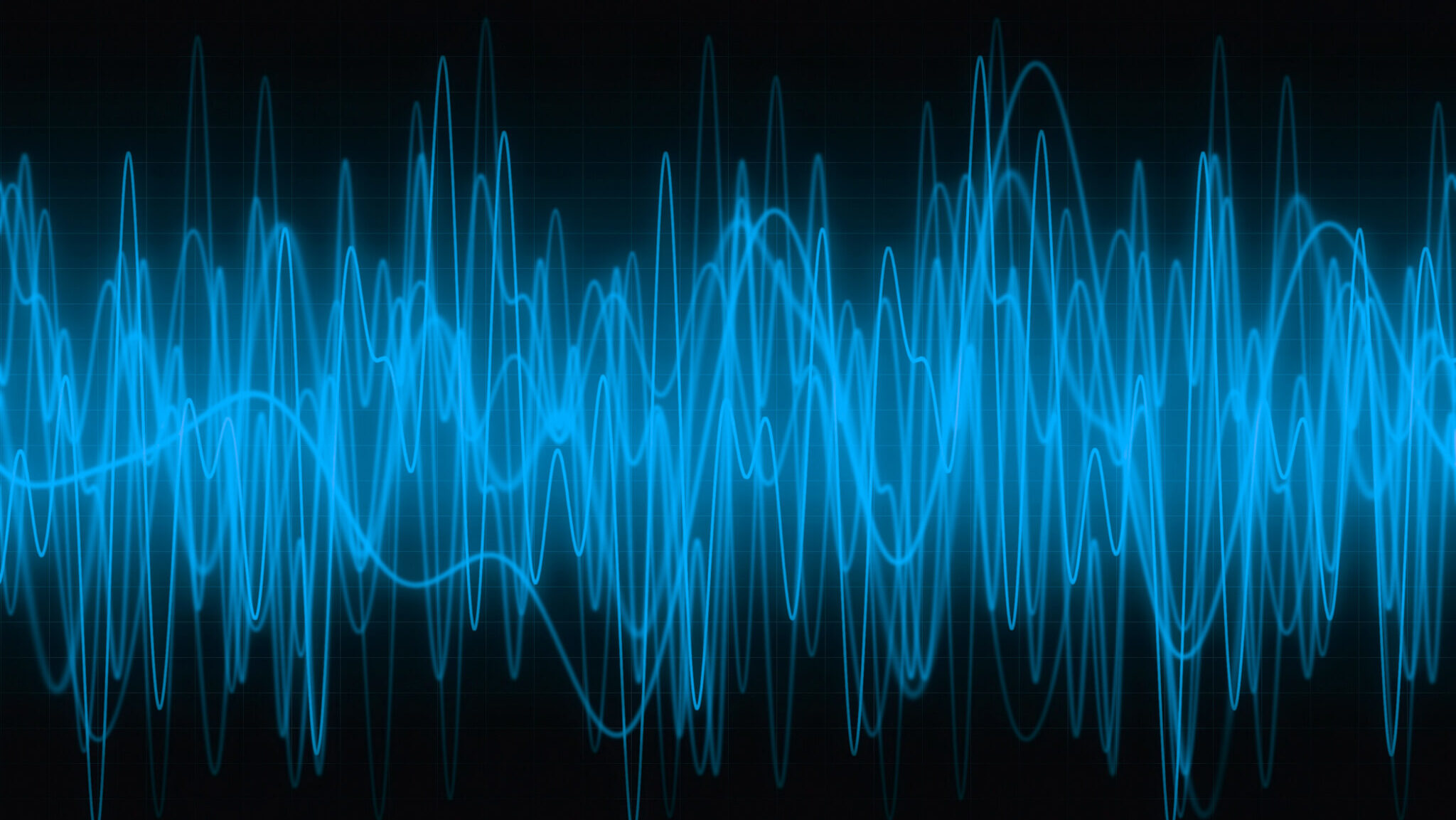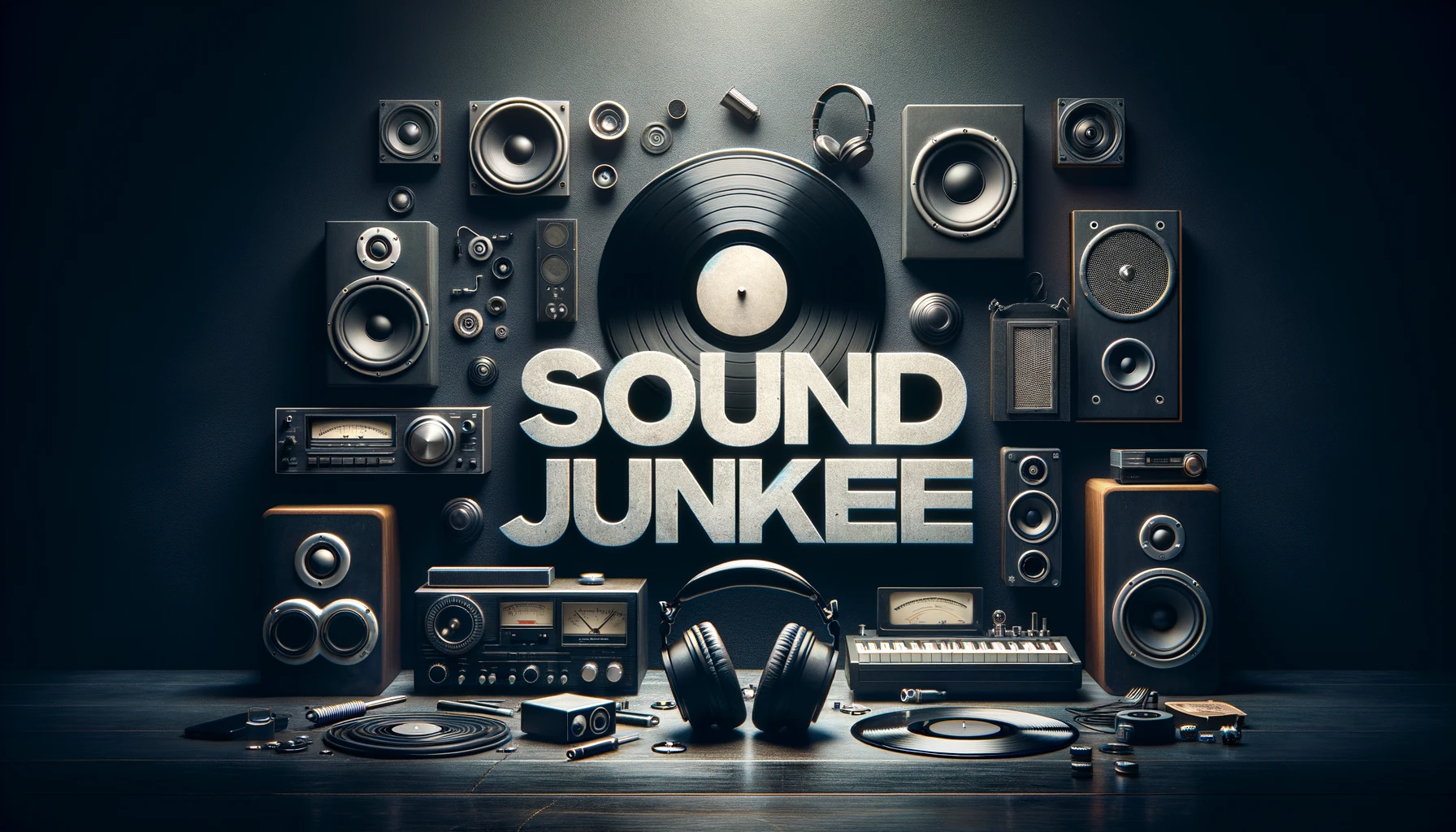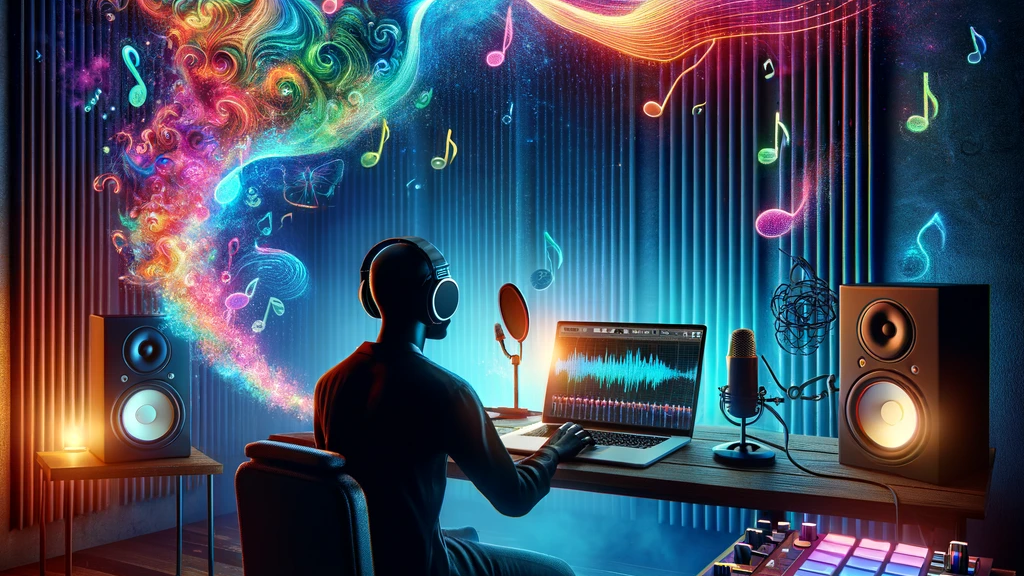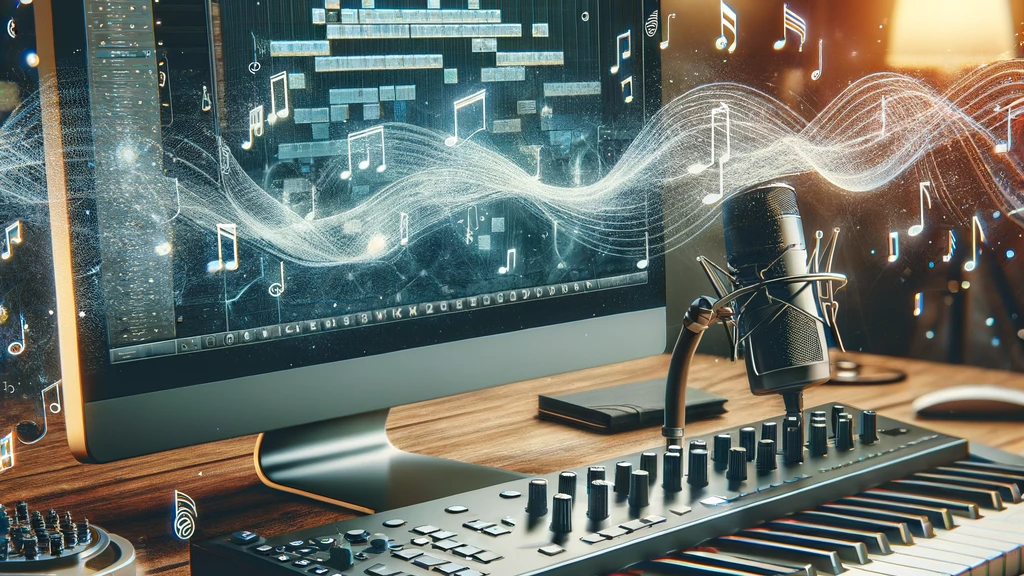Using Vocal FX plugins for vocal production, whether for music or voice over, revolves around capturing a voice and then transforming it into something compelling that sits perfectly in a mix, or makes the listener believe it’s in another setting or place.
In music, the voice is often the centrepiece, carrying the melody and the message of the song. The challenge for producers is to enhance and shape these vocal tracks in a way that complements the musical arrangement, while also ensuring the artist’s vocal talent shine through. Or alternatively, sometimes disguise any lack of talent!
This process involves a range of techniques, from subtle pitch correction and dynamic control to the creative use of effects like reverb and delay, all aimed at producing a sound that is both polished and authentic.
Using Vocal FX Plugins
Voice over production, on the other hand, is different. In voice over land, it’s all about clarity and intelligibility. The voice over artist’s job is to convey information, tell a story, or embody a character with just their voice. Producers focus on achieving a clean, clear, and consistent sound, often minimizing the coloration and effects. You wanna make sure the voice sits front and center, easily understood, whether it’s for a commercial, a documentary, or a character in a video game.
In both music and voice over production, technology plays a crucial role. Vocal FX plugins give you an unlimited amounts of ways to manipulate and enhance vocals. But at the end of the day, the main plug in is your ears. You’re only limited by your own creative vision, and it’s your gut feel and ears that make sure the end result is technically sound, and also emotionally compelling.
As we delve deeper into the tricks of vocal and voice over production, let’s look at different tools, techniques, and creative choices that can be used to shape the sounds. Sounds we’ve heard for years in songs, films, ads, and games. Whether you’re a newbie producer or simply curious about the magic behind the microphone, there’s plenty to dive into in voice production.
 Reverb – Adding Ambience and Space
Reverb – Adding Ambience and Space
Creating Spatial Context: Applying a long reverb to dialogue in a movie could create the sound of a large, empty, isolated area. Shorten the reverb and you might end up with the sound of a bedroom, kitchen, or even interior of a car. And there are similar things you can do with vocals in music. Using a small room reverb can create a cozy, intimate and close up atmosphere. While a long reverb in a power ballad or an orchestral piece can convey a sense of grandeur and make it massive, like it’s a performance recorded in a large concert hall or cathedral.
Enhancing Emotional Impact: In sound design, a carefully chosen reverb can amplify the emotional resonance of a scene. For example, in a poignant moment of a film, a long, expansive reverb on a character’s voice can evoke a sense of loneliness or vulnerability. In music, a ballad might use a similar long reverb to enhance the emotional depth of the vocals, creating a dreamlike, introspective atmosphere. And then a short, bright reverb in an upbeat pop song can add energy and a sense of immediacy to the vocals, making them more lively an fun.
Blending Background Vocals: In choral or ensemble pieces in music, a medium-sized reverb can be used to blend individual voices together, creating a unified, choir-like effect that still retains some spatial definition. A similar reverb setting could be used animation, radio, video games, etc to unify a group of people singing or chanting, giving the impression of them being in the same space, whether it’s a room or an open field.
Adding Texture and Depth: In genres like ambient or experimental music, a long, heavy reverb can transform the vocal into a lush, textural element, blurring the lines between voice and ambiance. This creates makes it sound almost hypnotic. You might use the same or similar setting in a sci-fi scenario. Applying a dense, long reverb to a character’s voice can make it sound like it’s from another planet, giving it a real ethereal feel.
Creating a Vintage Sound: For a retro feel in music, like in a classic rock, a plate or spring reverb can impart a warm, vintage character to the vocals, like they did back in the day. And if you’re recreating something from the old days, period pieces can also use types of reverbs on voices to replicate the sound quality of past eras, like a 1950s radio broadcast or a 1960s television show.
Dramatic Effects: A sudden burst of large reverb can be used to dramatize a revelation or a character’s realization, creating a moment of awe or shock. In music, especially in genres like progressive rock or electronic music, a dramatic cut-off reverb can create a sense of tension or surprise, often at the end of a phrase or before a significant change in the arrangement.
Dynamic Transitions: In documentaries or films with a narrator, gradually increasing or decreasing the amount of reverb on a narrator’s or character’s voice can subtly underscore transitions between scenes or create a shift in emotion. Or how about a build up before the drop in EDM? Manipulating the reverb on vocals during a buildup or breakdown can dramatically enhance the track’s dynamic flow, giving it more movement and progression.
>>> Learn About the Most Insane Vocal FX Ever <<<
 Delays and Echo – Creating Depth and Movement
Delays and Echo – Creating Depth and Movement
Enhancing Rhythm and Musicality: Delays can be used to add rhythm to a song. By syncing up the tempo of the delays feedback with the song’s BPM, making everything interact adding some energy and bounce. Delays can also be synced with visual elements to enhance storytelling in a video or movie. Imagine a scene in a sci-fi film where a character’s voice echoes rhythmically in a spaceship, aligning with blinking lights and mechanical sounds.
Creating Spatial Depth: Like reverb, one of the coolest things about echoes an delays is placing the voice in a specific environment. You can create the sensation of being in a large stadium, an intimate club, or over the PA at a shopping centre or airport. In sound design, echoes can be crucial in outdoor scenes, like on a mountain top, where the echo helps give the feeling of isolation and hugeness. It adds authenticity and immersion to the recording.
Building Emotional Impact: Delays and echoes can magnify the emotional resonance of a vocal. If you’re producing an emotional song a trailing echo can add to the depth, making the words linger longer. Or In a movie, podcast, radio etc, an echo on a dramatic line might linger in the silence, amplifying the emotion and leaving a more lasting impression.
Creating Character and Style: In music, delays can define an artist’s signature sound. A reggae artist might use a tape delay to create a characteristic dub effect that’s integral to the genre. Even in rock or pop tracks, a slight slap delay can add a lot of character to the vocals. Or Echos and Delays can bring characters to life – like a villain in a thriller whose voice echoes menacingly, heightening their intimidating presence.
Transformative and Surreal Effects: Delays can be used to craft otherworldly vocal effects that transform the listener’s reality. In a psychedelic rock track, a complex, evolving delay can turn the vocals into a mesmerizing, almost hypnotic element. And in fantasy or sci-fi, producers use delays to craft unique vocal effects for mystical creatures, making their language and communication sound enchanting and beyond the realm of the ordinary.
 Compression – the Dynamics Balancing Act
Compression – the Dynamics Balancing Act
Balancing Vocal Dynamics: Compression helps to even out the dynamic range of a vocal, so every word is nice and clear. Control the peaks of a powerful soul singer’s performance, or an energetic voice over, so it sits back in the mix. You can use compression to squash the voice until its waveform is flat and if EQ’d correctly it will cut through a loud mix. Alternatively, for podcasts for instance, you might want to have a more dynamic voice, so it’s not so taxing on the ears of anyone listening on headphones.
Adding Punch and Presence: Compressors can be used to give vocals a more upfront and present sound. Great for rock and pop where the vocal needs to cut through lots of instrumentation. If you’re making crazy ads or fast-paced media, compression can make voice-overs more assertive and attention-grabbing, helping the message cut through. I mean, you don’t want people to miss the bit about ‘crazy deals on Black Friday sales!’
Enhancing Emotional Intensity: Compression can subtly enhance the emotional intensity of a vocal. In a cheesy ballad, a light touch of compression can make the tiny nuances of the performance more noticeable, highlighting the cheesiness of the song, ha!. Or how about in movies? If a character is whispering a line, compression can make it feel more intimate and intense, making the voice front and centre on the screen and speakers.
Creating Consistency in Multi-Track Vocals: For music with complex vocal arrangements, like choral pieces or layered harmonies, compression can help to blend and balance the different vocal tracks, ensuring a cohesive sound. In sound design for ads, animations or video games with multiple characters, compression can help maintain a consistent vocal level across different characters, aiding in the creation of a balanced and unified auditory landscape.
Crafting Vocals for Different Media Formats: Compression is crucial in tailoring vocal sound for various media formats. In music, this means ensuring that vocals sound great whether streamed online, played on the radio, or through different listening devices. In sound design, especially for content consumed on mobile devices or laptops, compression ensures that voice overs are clear and audible, regardless of where the audience is listening.
 Equalisation (EQ) – Shaping and Enhancing
Equalisation (EQ) – Shaping and Enhancing
Tailoring Vocal Tonal Balance: EQ allows you to adjust different frequencies, so the voice sits just where you want it to in the mix. You might want to boost the midrange frequencies to add warmth to a voice, or cut low frequencies to get rid of that yucky muddy sound. In post production for movies, TV, ads etc you can use EQ to make a voice more intelligible.
Enhancing Vocal Clarity and Presence: EQ is essential in bringing out the clarity and presence of a vocal. In a pop song, high frequencies might be boosted to add crispness and make the vocals stand out. In voice-over work for commercials, EQ can help the voice cut through the mix, making the message clear, easier to hear and more engaging for the listener.
Creating Character and Style in Vocals: EQ can be used creatively to give vocals a specific character or style. For instance, reducing high frequencies can give a vocal a vintage, lo-fi quality, popular in indie or retro music styles. In sound design, EQ can be used to create special vocal effects, like a telephone or radio voice effect, put the voice into a different situation.
Addressing Recording Imperfections: Sometimes, recordings come with unwanted frequencies or resonances. EQ can help remove these. Use it to get rid of unwanted muddy sounds, or maybe cut back some high or bottom end house making the recording sound messy. It can also be used to minimise room tone or background noise, so you have nice clean audio to use in the final mix.
Balancing Vocals in Different Sonic Environments: EQ keeps vocals sound consistent across various listening environments. In music, this means making sure the vocals sound good on different playback systems, from car stereos to headphones. And if you’re making a podcasts or audiobook, EQ helps make sure any words spoken are clear and pleasant to listen to, regardless of the device its being played back on.
>>> Learn More about EQ and Compression here <<<
 Pitch – Correction to Manipulation
Pitch – Correction to Manipulation
Corrective Pitch Adjustments: Pitch shifting is often used to correct slight intonation issues in vocal recordings, ensuring that every note is in perfect harmony with the music – Auto Tuning. This subtle form of correction is helps make vocal performances sound perfect, where even minor off-key moments can detract from an otherwise flawless performance.
Artistic and Stylistic Effects with Auto-Tune: Auto-Tune, when used as a noticeable effect rather than a subtle correction tool, can create a distinct, modern sound in vocal performances. Hhip-hop, pop, and electronic music love it – creating robotic, slightly unnatural sounds with heavily Auto-Tuned vocals has become a thing. You can also use the effect in sound design, to make characters sounds like they’re a from another world, or robotic.
Creating Character Voices and Effects: Pitch manipulation can be used to alter a voice’s character significantly. You might want to lower the pitch to create a villain’s voice or raise the pitch to get the sounds of a fairy-like character. In music, altering the pitch of backing vocals can add an interesting texture, creating a chorus effect you’ll never get with natural voices alone.
Harmonising and Layering Vocals: Manipulating pitch can be used to create harmonies from a single vocal line, layering pitches to craft a rich, textured vocal arrangement. This technique is particularly useful for solo artists or small bands looking to achieve a fuller vocal sound without additional singers. Using just one voice, you can add layers of the same vocal pitched up and or down to create the sounds of a group behind the main singer or character.

Modulation – Add Depth and Movement
Chorus for Richness and Depth: The chorus effect thickens vocals by duplicating the original signal and slightly altering its timing and pitch. it can add a lush, full quality to a vocal, making it sound as though multiple voices are singing in unison. Chorus can also be used to give a single actor’s voice a more resonant, supernatural quality, useful in fantasy or sci-fi.
Flange for Dramatic Sonic Textures: Flanging creates a unique, swirling sound by combining a delayed signal with the original. Adding flange to a track can give it a sense of motion. It’s often used in psychedelic rock and experimental genres to achieve a trippy, spacey effect. Flanging also sounds cool on a regular voice over when used lightly to add a bit of stereo depth.
Phasing for Movement and Ethereal Quality: Phasing alters the phase of the audio signal, creating a sweeping, whooshing effect that can vocals sound more dynamic. It can be used to add movement to a voice. It’s popular in funk, soul, and electronic music. Or alternatively, phasing could create an eerie or ghostly effect. Similar to flange and chorus, it adds movement.
Ring modulation for Metallic Textures: Ring modulators create metallic sounds. When applied to vocals, it can add alien-like textures. This effect multiplies two audio signals, often resulting in a harmonically rich and atonal output that can transform a voice into something completely unrecognisable. It’s great for making robotic voices, alien communications, or sci-fi elements.
 Distortion/Saturation – Harmonics and Intensity
Distortion/Saturation – Harmonics and Intensity
Adding Grit and Edge with Distortion: Distortion is how to get a gritty, dirty vocal sound, like they do in rock and metal. It can make a vocal stand out in a mix of loud instrumentation. Producers also apply distortion to voices to make them sound angry, supernatural, or just to suggest they are speaking or singing through a radio or a PA system.
Warmth and Richness with Saturation: Saturation offers a subtler alternative to distortion, often used to add warmth and fullness to vocals. It can give your voice a nice vintage sound, with an analog quality, to give the feel of old tape recordings. In other audio production, saturation is used to create the sounds of historical or period pieces by making a recording sound more lo fi.
Textural and Atmospheric Elements: Beyond direct vocal treatment, distortion and saturation can be used to create atmospheric and textural elements in both music and sound design. In ambient or electronic music, a distorted vocal snippet can serve as an intriguing sonic backdrop. In the sound design of a thriller or horror film, saturation can add a sinister, unsettling quality to voices or background noises, contributing to the overall atmosphere of the scene.
 De-Essing, Gating and Panning
De-Essing, Gating and Panning
De-Esser for Clarity and Comfort: A de-esser is used on vocals to get rid of the yucky pronounced “s” sounds that can be grating to the ear. so whether you’re listening to music, a podcast, audio book or whatever kind of audio – the voice’s harsh ‘S’ sounds are not going to make your ears bleed, or be an annoyance in the mix.
Noise Gate for Clean and Focused Audio: A noise gate is a powerful tool for eliminating unwanted background noise. You can throw a gate on a voice if it’s been recorded in a space that’s not acoustically treated, to remove traffic or general room tone. You set the threshold of the plug in to whatever level of sound you want in or eliminated from the recording.
Pan Effects for Spatial Dynamics: Panning affects place vocals within the stereo field, creating a sense of space and movement. Panning can be applied to creativity move vocals around the person listening, creating an immersive listening experience. In cinematic sound design, panning left or right is crucial for matching the movement of characters on screen.
 Wrapping Up – Vocal FX Wizardry in a Nutshell
Wrapping Up – Vocal FX Wizardry in a Nutshell
Once you go deep and really get into it, you’ll quickly see your ability to completely transform a production piece just by playing around with the sound of the vocal. This initial manipulation can set the entire tone of your song or whatever, even before you start touching other elements of the mix. What’s achievable is pretty much limitless, from tiny subtlest inflections to the most dramatic overhauls. It all depends on what kind of sound you’re after for the end result.
So, whether you’re a producer just beginning or an audio nerd experimenting with sounds in your bedroom, it’s important to recognize that working with vocal FX is not just about making minor adjustments. You’re essentially reimagining the voice in ways that can entirely change the original recording’s vibe. Take a simple, raw vocal track and transform it into something entirely new – something with emotion, that tells a compelling story.
Experiment and push the boundaries. See how far you can take it before it goes into wrong town.





Your blog post is incredibly insightful! I’ve been exploring audio production myself, and your detailed breakdown of techniques is immensely helpful. Have you experimented with specific EQ settings that work well for enhancing vocals without overpowering them? Personally, I’ve found slight boosts in the high-mid frequencies can add clarity without making the vocals sound harsh.Your discussion on maintaining balance between creativity and technicality resonated with me. It’s easy to get lost in the technical aspects and lose sight of the artistic expression. How do you strike a balance between using plugins creatively while ensuring they serve the song’s emotion and narrative? Overall, your expertise shines through. Thanks for sharing!
Hey Pasindu! Thanks for reading. Yep, you are spot on with the high-mid comment about adding clarity to vocals. But ultimately, it depends on the quality of the recording and the singer’s voice. So you’ll always be adjusting settings for different sounds. As for using plug ins and trying not to lose sight of the vision. If the FX aren’t part of the sound you’re trying to achieve, then just leave them out. Or alternatively, worked them as hard as you like to get a subtle or aggressive version of whatever effect you’re adding. But yeah, it’s all about balance.
Experimenting with Vocal FX plugins is a thrilling venture into the sonic playground, and the techniques employed by seasoned pros showcase a nuanced understanding of both the technical and artistic aspects. The key takeaway is to approach each track with a fresh perspective, be fearless in exploration, and most importantly, let the vocals shine while embracing the magic of FX in enhancing the overall sonic tapestry.
Very good and in depth article.
Michael
Thanks Michael. Appreciate the kind words. Totally agree with your comment about fresh perspective. There’s never one ‘set and forget’ technique or setting.